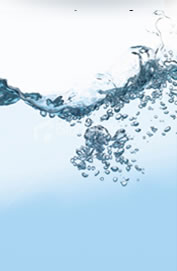Purified Wastewater Could Meet the Water Needs of 8 Million People in California
Prolonged and severe droughts and other factors have made water supplies increasingly scarce in California, Texas, and many other regions of the United States, as well as elsewhere around the globe. A viable and affordable solution for many communities is to turn their wastewater into purified drinking water, according to a new WateReuse Research Foundation White Paper.
In The Opportunities and Economics of Direct Potable Reuse (WRRF-14-08), Dr. Robert S. Raucher of Stratus Consulting and Dr. George Tchobanoglous of the University of California, Davis find that potable water reuse is generally less expensive than—or comparable in cost to—the potential alternative sources of new water supply available to communities in places such as California.
“This White Paper is hugely important,” said WateReuse Executive Director Melissa Meeker. “It pulls together data that shows that we have the technology to purify our wastewater to meet or exceed all drinking water standards at a price that can be more affordable then importing water or desalinating the ocean.”
 Potable Reuse refers to reused water you can drink. It’s purified sufficiently to meet or exceed federal and state drinking water standards and is safe for human consumption. The cost of potable reuse depends on many site-specific factors but is expected to be on the order of $820 to $2000 per acre foot (about $2.52 per 1000 gallons at the low end and up to $6.14 per 1000 gallons), according to the White Paper.
Potable Reuse refers to reused water you can drink. It’s purified sufficiently to meet or exceed federal and state drinking water standards and is safe for human consumption. The cost of potable reuse depends on many site-specific factors but is expected to be on the order of $820 to $2000 per acre foot (about $2.52 per 1000 gallons at the low end and up to $6.14 per 1000 gallons), according to the White Paper.
Wastewater that is discharged to the ocean or to inland waterways represents a significant source of new water for communities facing water scarcity issues. In California, for example, the White Paper finds that purified wastewater can provide enough potable water to supply all municipal needs (including commercial and industrial uses) for more than 8 million people, or roughly one-fifth of the state’s projected population for 2020.
Potable reuse may be characterized as either indirect potable reuse (IPR) or direct potable reuse (DPR). In IPR, purified water is introduced into a groundwater aquifer or a surface water reservoir for a specified period of time before being withdrawn for potable purposes. In DPR, purified water is introduced into the raw water supply feeding a water treatment plant with or without the use of an engineered buffer. Both IPR and DPR have been used successfully in many locations.
The White Paper finds that potable reuse compares favorably with other new water supply alternatives in terms of cost, energy requirements, environmental considerations, and reliability. Adding DPR to the water supply mix will enable many communities to tap into potable reuse in locations where IPR is not feasible (because of the lack of suitable surface reservoir or aquifer storage) and may save many communities on cost and energy requirements as well.
This free White Paper can be downloaded from the WateReuse Research Foundation website athttps://www.watereuse.org/product/14-08-1.



